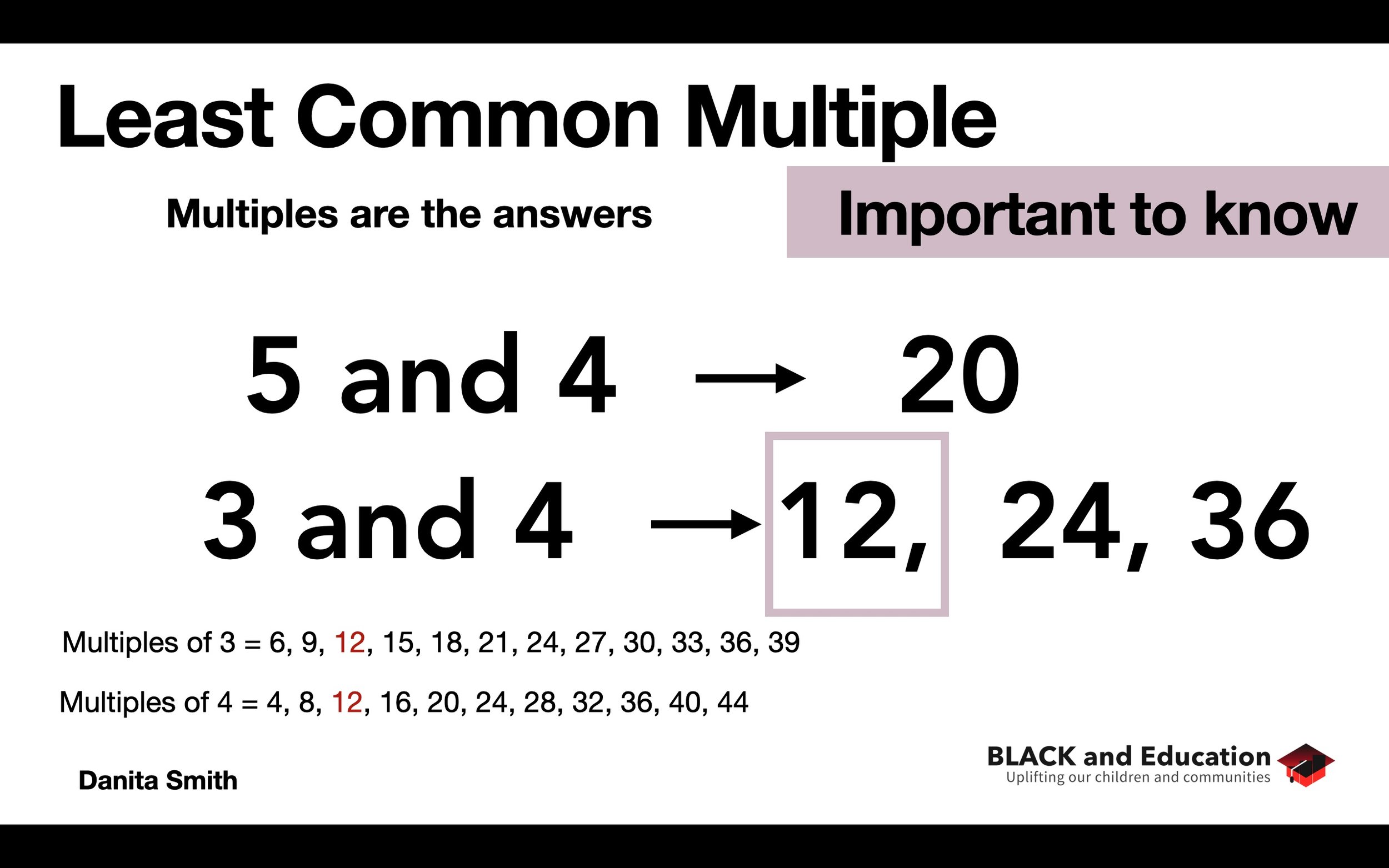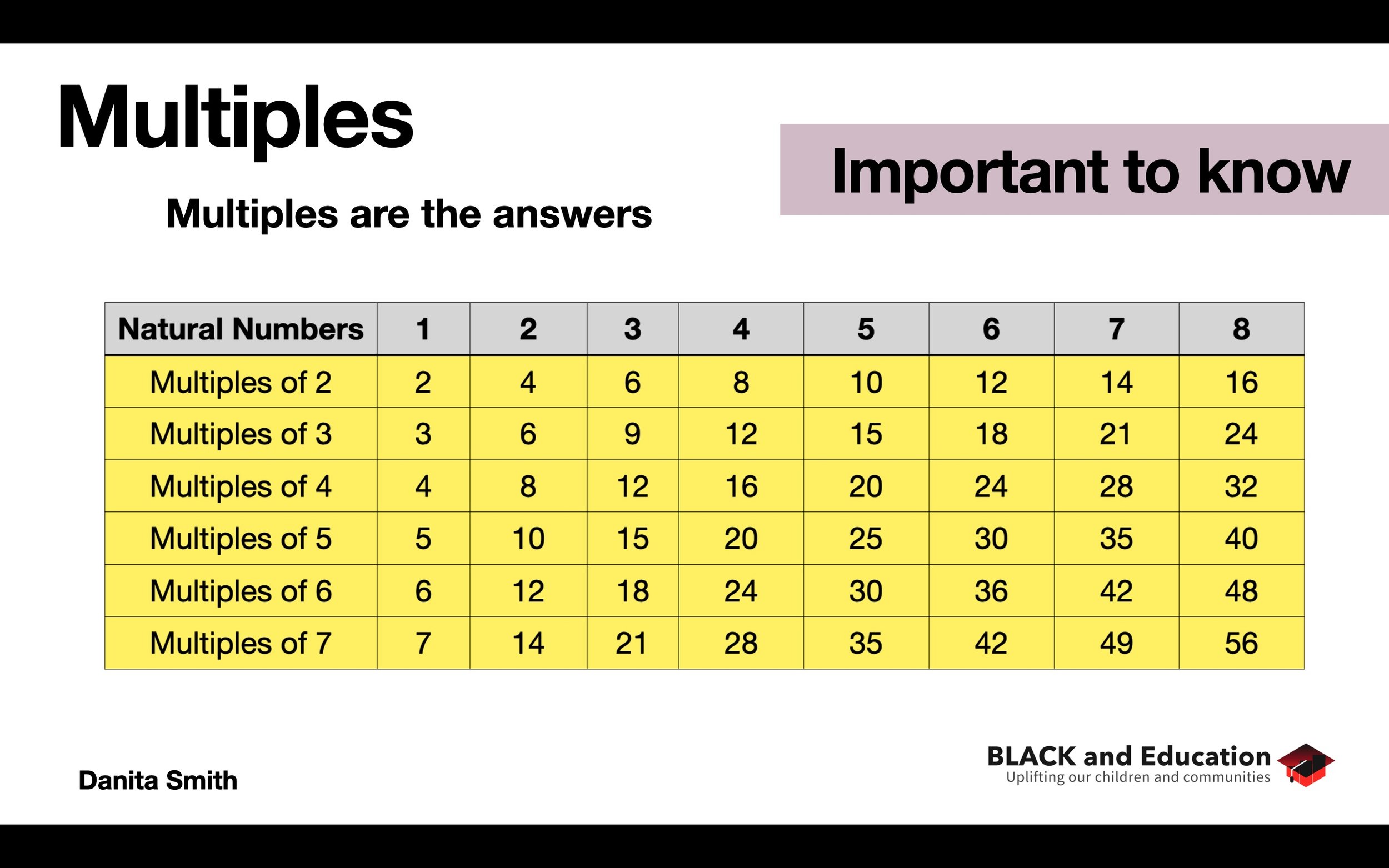Least Common Multiple
Available on Amazon
Multiples, as we have mentioned, are the answers to math common multiplication problems, where their factors can divide evenly into them.
Least common multiples help you, greatly, when it comes to fractions—let’s say—they help you add and subtract fraction where there are unlike denominators.
If we were to take the factors, 5 and 4 below, we could easily determine what is their smallest common multiple.
5 and 4 have 20 as their first, or least, common multiple—if you worked out the multiples of 5 and 4, 20 would be the first one you came to that they have in common.
Also, note above, where we list our the multiples of 4 and 3. 12 is the first one we come to and although they share other multiples (24, 36), 12 is the least common multiple that they share.
So, looking at the table above, you can see multiples listed out for many of the common multiplication problems you learn in elementary school. These facts are great to know because you will often need to divide, or multiply, these numbers to find answers to the problems you will face in life and in math.
Summary
The least common multiple of two factors is the lowest multiple they have in common (and the factors divide evenly into that multiple).
The least common multiple will help you when you work through adding and subtracting fractions with unlike denominators and in other areas in math.



